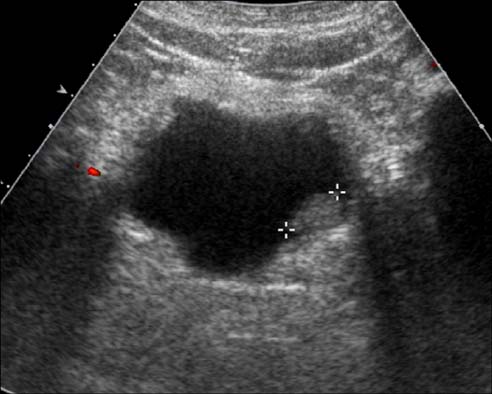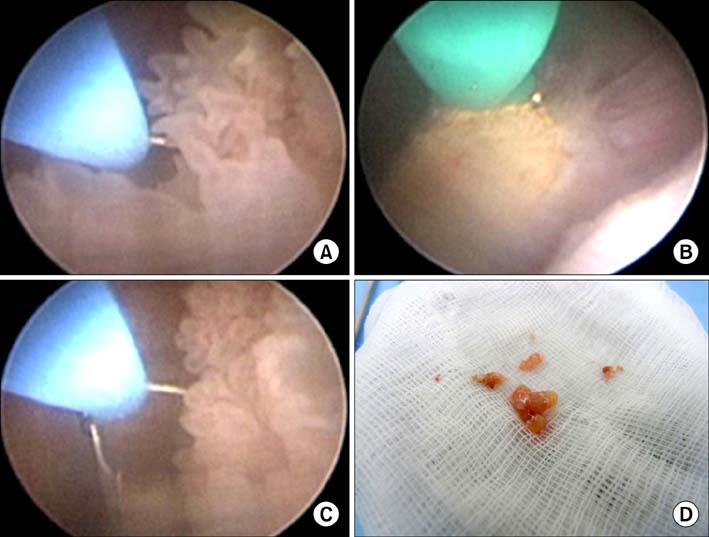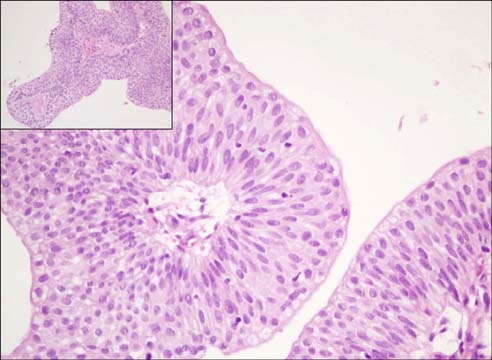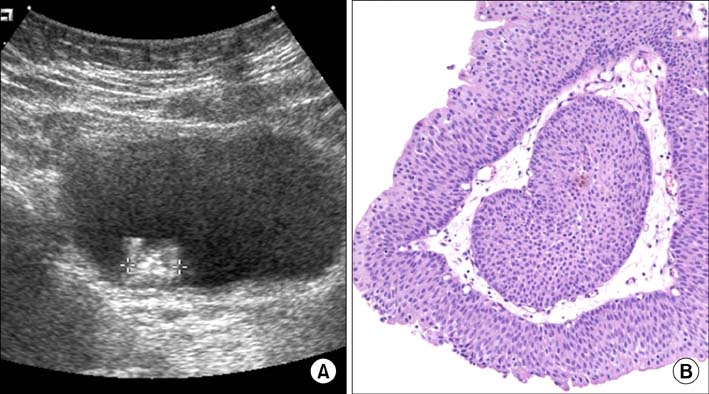Korean J Urol.
2014 Jun;55(6):430-433. 10.4111/kju.2014.55.6.430.
Urothelial Tumors of the Urinary Bladder in Two Adolescent Patients: Emphasis on Follow-up Methods
- Affiliations
-
- 1Department of Urology, Ulsan University Hospital, University of Ulsan College of Medicine, Ulsan, Korea.
- 2Department of Urology, Asan Medical Center, University of Ulsan College of Medicine, Seoul, Korea.
- 3Department of Anesthesiology and Pain Medicine, Jeju National University Hospital, Jeju National University College of Medicine, Jeju, Korea.
- 4Department of Urology, Kyung Hee University School of Medicine, Seoul, Korea.
- 5Department of Urology, Samsung Medical Center, Sungkyunkwan University School of Medicine, Seoul, Korea. drminkibaek@gmail.com
- 6Seoul Samsung Urology Clinic/Gynecology Health Care Center, Ulsan, Korea.
- KMID: 1885624
- DOI: http://doi.org/10.4111/kju.2014.55.6.430
Abstract
- Here we describe two cases of papillary urothelial neoplasm of low malignant potential in adolescent boys. One case was a 16-year-old boy with a polypoid mass beside the right ureteral orifice and the other case was a 13-year-old boy with a papillary mass beside the left ureteral orifice. The initial presentation was hematuria in both cases and the bladder mass was detected by ultrasonography. Complete resection of the bladder tumor was performed by using an 11-Fr pediatric resectoscope. Follow-up has been performed with urine analysis, urine cytology, and bladder ultrasonography or cystoscopy every 3 months with no evidence of recurrence.
Keyword
MeSH Terms
Figure
Cited by 1 articles
-
Clinicopathological Characteristics of Urinary Bladder Tumors in Korean Patients 20 Years or Younger
Seong Cheol Kim, Sejun Park, Sang Hoon Song, Kun Suk Kim, Sungchan Park
J Korean Med Sci. 2018;33(40):. doi: 10.3346/jkms.2018.33.e242.
Reference
-
1. Paner GP, Zehnder P, Amin AM, Husain AN, Desai MM. Urothelial neoplasms of the urinary bladder occurring in young adult and pediatric patients: a comprehensive review of literature with implications for patient management. Adv Anat Pathol. 2011; 18:79–89.2. Williamson SR, Lopez-Beltran A, MacLennan GT, Montironi R, Cheng L. Unique clinicopathologic and molecular characteristics of urinary bladder tumors in children and young adults. Urol Oncol. 2013; 31:414–426.3. Hoenig DM, McRae S, Chen SC, Diamond DA, Rabinowitz R, Caldamone AA. Transitional cell carcinoma of the bladder in the pediatric patient. J Urol. 1996; 156:203–205.4. Lerena J, Krauel L, Garcia-Aparicio L, Vallasciani S, Sunol M, Rodo J. Transitional cell carcinoma of the bladder in children and adolescents: six-case series and review of the literature. J Pediatr Urol. 2010; 6:481–485.5. McGuire EJ, Weiss RM, Baskin AM. Neoplasms of transitional cell origin in first twenty years of life. Urology. 1973; 1:57–59.6. Patel R, Tery T, Ninan GK. Transitional cell carcinoma of the bladder in first decade of life. Pediatr Surg Int. 2008; 24:1265–1268.7. Epstein JI, Amin MB, Reuter VR, Mostofi FK. Bladder Consensus Conference Committee. The World Health Organization/International Society of Urological Pathology consensus classification of urothelial (transitional cell) neoplasms of the urinary bladder. Am J Surg Pathol. 1998; 22:1435–1448.8. Fine SW, Humphrey PA, Dehner LP, Amin MB, Epstein JI. Urothelial neoplasms in patients 20 years or younger: a clinicopathological analysis using the world health organization 2004 bladder consensus classification. J Urol. 2005; 174:1976–1980.9. Kurz KR, Pitts WR, Vaughan ED Jr. The natural history of patients less than 40 years old with bladder tumors. J Urol. 1987; 137:395–397.10. Madgar I, Goldwasser B, Nativ O, Hanani Y, Jonas P. Long-term followup of patients less than 30 years old with transitional cell carcinoma of bladder. J Urol. 1988; 139:933–934.





